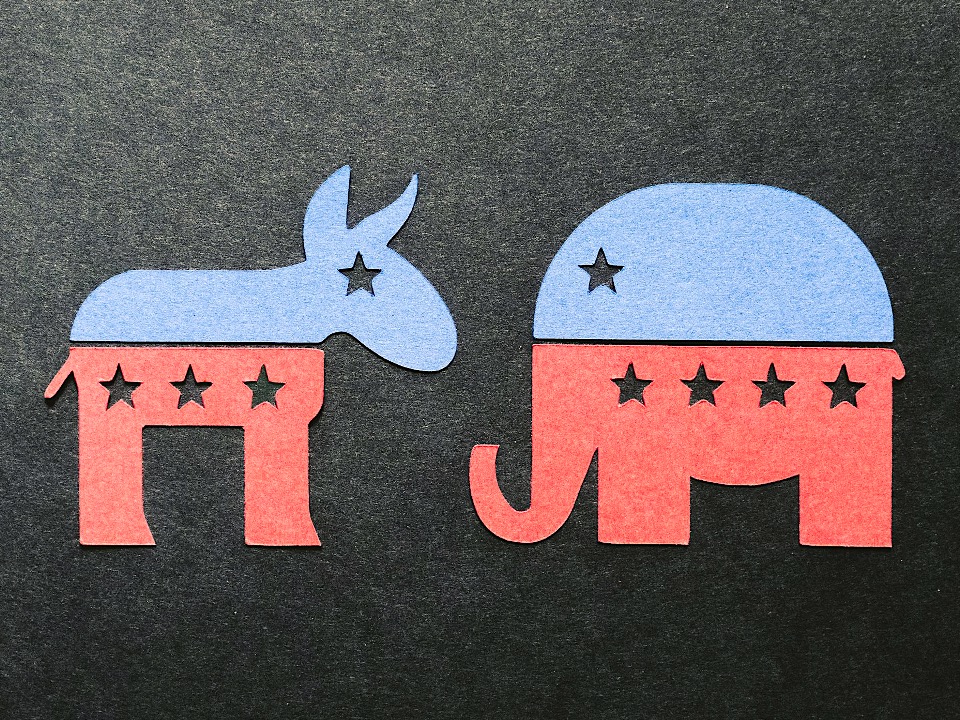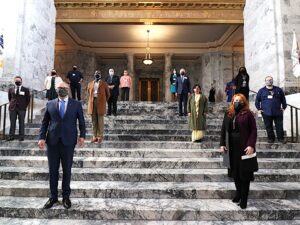Even though the US’s largest political “party” by far is independents, Democrats and Republicans influence everything about how government in the US operates. It’s just a fact.
That’s why it’s essential to cover them in your high school Civics & Government class. Especially since students always have strong yet limited or incorrect beliefs about them.
But how do you do that and still be totally neutral yourself?
For years, I avoided those political party platforms or party affiliation quizzes online. On a practical level, the questions usually get too much into policy level that students don’t even understand what’s being asked. Ethically, it’s likely impossible for any organization to describe the ideas of opposing parties without a stitch of bias or parent concerns.
Then I discovered the perfect Party Platform PBL project — have the students actually make a quiz themselves!
Crazy enough, doing this eliminates both those issues. Here’s an overview of the five-part project we do in my class.
1. Access Incoming Knowledge
This type of warm-up only works if students do have some incoming ideas about a topic, and political parties are definitely one of them.
I hand out sheets of paper with the names of various political parties. I do the Constitution, Democratic, Green, Libertarian, and Republican parties.
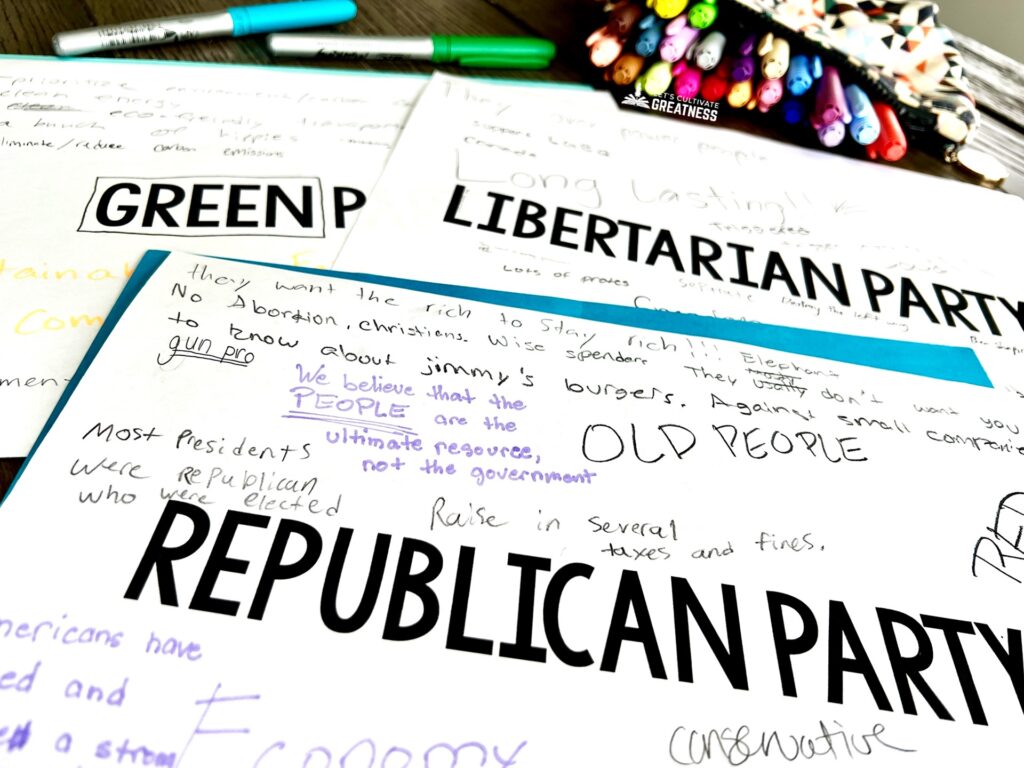
Students rotate the sheets and jot down anything they know (or think they know) about each. Anything is welcome! Afterward, we chat a little about what they wrote, but mostly, these are to refer to throughout this lesson sequence.
2. Examine The Party Preambles
Pull the preambles of the platform statements of the parties you examine, redacting spots where they overtly identify themselves (like “As the Democrat Party…”).
Randomly assign students to read one of the preambles, agreeing and disagreeing with what’s said. Then, in small groups, have them capture the main ideas and values expressed by that party. Lastly, have them share their preambles, their analysis of them, and their guesses of the party they belong to with the class.
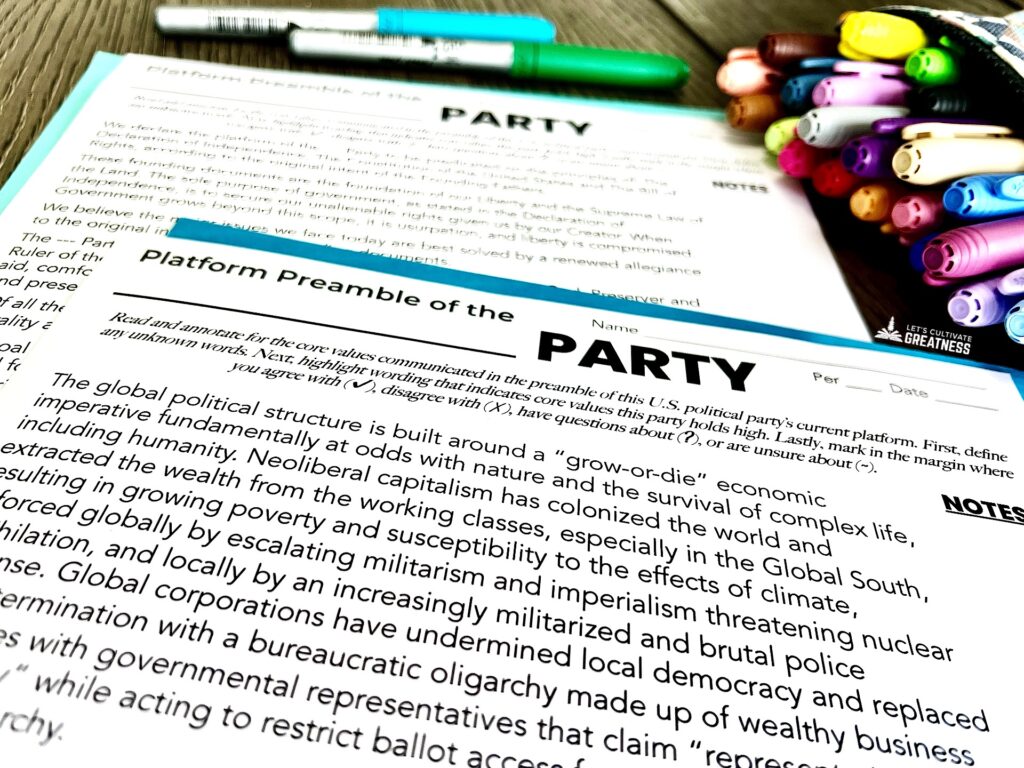
Now is a great time to revisit those brainstorm sheets and update them with new or correct information.
3. Research Party Platform for Specific Issues
Create a list of a dozen or so common policy issues, like gun rights, the environment, and taxes. Assign students one each randomly. Hopefully, you’ll have at least a few students on each issue across your classes.
Give students time to explore the rest of the party platforms, but only for their one issue, and take notes. This makes these large documents much more manageable.
This research always raises great questions, as students notice that some parties may discuss issues extensively while others don’t mention them at all.
4. Create a Party Ideology Poster
This is where it gets fun. Students take what they learned about their one issue and create a flip-up poster. Have them summarize what each party believes on the issue on small squares of paper and glue them to a poster sheet using just a stripe at the top so they flip up like sticky notes do.
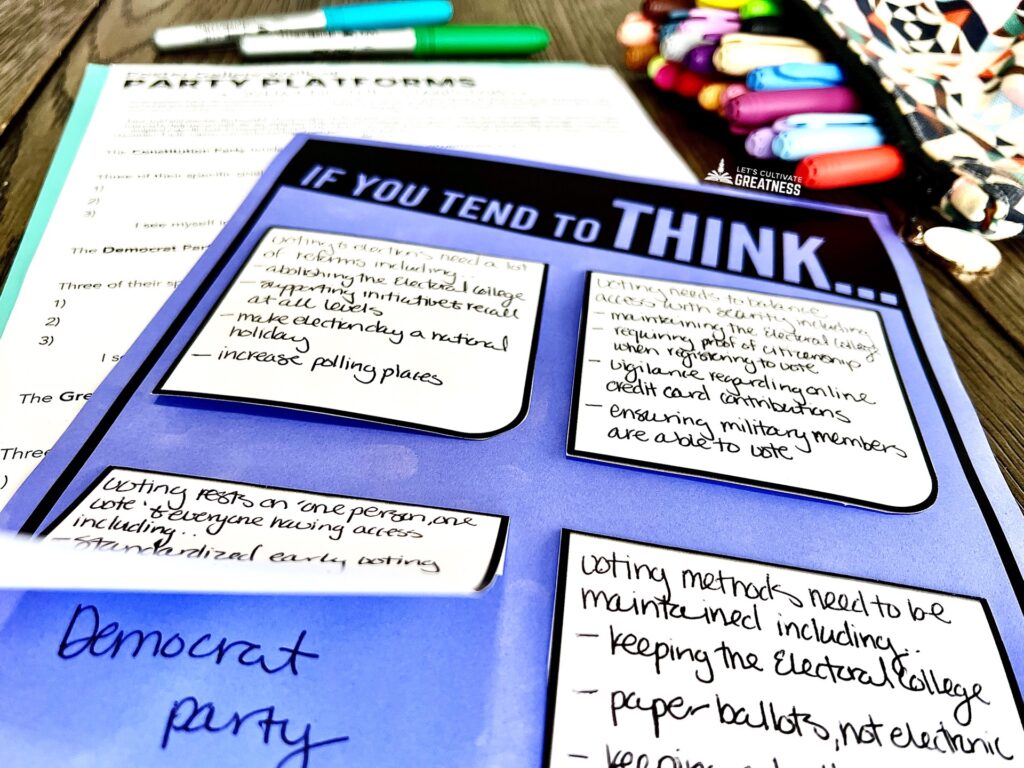
Underneath each square, they write the party’s name of the platform they summarized on top.
Make the posters due the day before the next activity so students can interact with posters created across all your sections.
5. Host a Party Ideology Quiz Gallery Walk
Display the posters around your room for students to rotate through, learn about the policy details of each party’s platforms, and develop a sense of which party they align with the most.
After perusing them, have students flush out their learning and reflection with questions like “What are three words that best summarize each party?” and “Which party surprised you the most? Why is that?”
Lastly, return to the incoming knowledge brainstorm sheets to add to them, correct misconceptions, and assess how much they learned.
Bonus! Create an Interactive Bulletin Board
These posters make a super easy and engaging hallway display for the rest of the school. Post them, and you will absolutely see curious students and staff pausing to flip them up.
I hope this political party platform project works in your high school Civics class as well as it does in mine! And click here to read about other easy, yet real-life PBL Civics project ideas you can do.
Feature image credit: Kelly Sikkema

